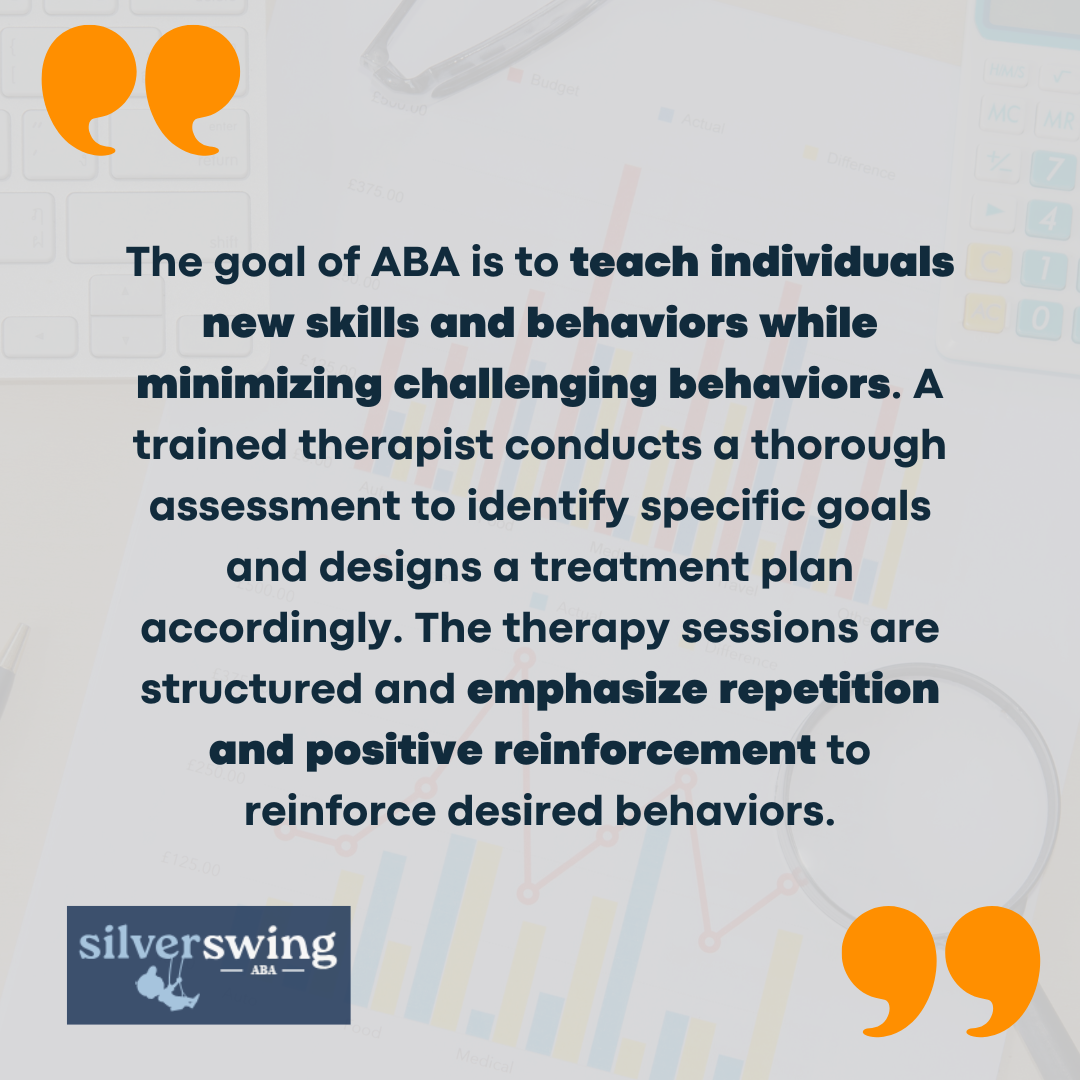There is no one-size-fits-all approach for treating autism spectrum disorder. After all, the most effective therapies and interventions for ASD vary from person to person, as each individual with autism has unique needs and challenges.
However, there are certain strategies and treatments that have shown promise in improving the lives of individuals with autism.
So without further ado, let’s explore the various autism treatments and see which of them can be considered the best.

Behavioral Therapies
Behavioral therapies play a crucial role in helping individuals with autism develop essential skills and improve their overall quality of life. There are two prominent behavioral therapies for autism that fall under this category.
These are as follows:
Applied Behavior Analysis (ABA)
Applied Behavior Analysis (ABA) is one of the most widely used and effective therapies for individuals on the autism spectrum. It focuses on encouraging positive behaviors through a reward system. ABA therapy is highly individualized and tailored to meet the specific needs of each person with autism.

While ABA therapy has shown significant success in teaching important skills for success in school or work environments, it can be a topic of controversy due to its emphasis on behavior modification.
Cognitive Behavioral Therapy (CBT)
Cognitive Behavioral Therapy (CBT) is another valuable therapy for individuals with autism, particularly in addressing anxiety-related challenges. CBT focuses on helping individuals recognize and modify negative thought patterns and behaviors.
CBT helps individuals with autism develop coping strategies for managing anxiety, improving emotional regulation, and enhancing social skills. By identifying triggers and challenging negative thought patterns, individuals can learn to navigate social situations more effectively.
CBT can be particularly beneficial for individuals with autism who experience difficulties in understanding and expressing emotions. By improving emotional recognition and regulation, individuals can enhance their overall well-being and social interactions.
Both ABA and CBT are evidence-based therapies that have shown positive outcomes for individuals with autism. However, it is essential to consider the unique needs and preferences of each individual when selecting the most suitable therapy approach.
A qualified professional can provide guidance and develop a personalized treatment plan that maximizes the benefits of these behavioral therapies for individuals with autism.

Social and Communication Therapies
Apart from behavioral therapies, social and communication therapies also play a vital role in helping individuals with autism develop essential skills for social interaction and effective communication.
Under this category are the following:
Social Skills Training (SST)
Social skills training (SST) is a structured therapy approach that focuses on helping individuals, particularly children, develop the necessary social skills to navigate social situations successfully.
SST aims to teach fundamental skills such as initiating and maintaining conversations, understanding humor, interpreting non-verbal cues, and building friendships.
For individuals on the autism spectrum, social interactions can be challenging. SST provides specific strategies and techniques to address these difficulties and improve social functioning. Through role-playing, modeling, and guided practice, individuals learn how to engage in appropriate social behaviors, navigate social norms, and develop meaningful relationships.
SST is typically conducted in a group setting, allowing individuals to practice their newly acquired skills with peers who may be facing similar challenges. This group dynamic provides a supportive environment for social learning, where individuals can receive feedback, guidance, and reinforcement from both professionals and peers.
Speech Therapy
Speech therapy, also known as speech-language pathology, focuses on improving communication skills and language development in individuals with autism. This therapy addresses various aspects of communication, including speech production, comprehension, articulation, and expressive language.
For individuals with autism who struggle with verbal communication, speech therapy can be immensely beneficial. It helps individuals learn how to use words correctly, enhance their speech rate and rhythm, and improve communication regarding thoughts and feelings.
Speech therapists utilize various techniques, exercises, and tools to support language development and improve overall communication abilities.
In addition to verbal communication, speech therapy may also involve alternative communication methods, such as the use of visual supports, PECS, augmentative and alternative communication (AAC) devices, or sign language. These approaches are tailored to the individual’s needs and preferences, ensuring that they can effectively express themselves and understand others.
Speech therapy is often provided on an individual basis, allowing therapists to address specific communication goals and adapt the therapy to the individual’s unique needs. The therapy sessions may include activities that target articulation, language comprehension, vocabulary expansion, and pragmatic language skills.
By incorporating social skills training and speech therapy into a comprehensive treatment plan, individuals with autism can make significant strides in their social interactions and communication abilities.
These therapies provide essential tools and techniques to navigate social situations, foster meaningful connections, and enhance overall communication skills.

Sensory Therapies
Individuals with autism often experience difficulties with sensory processing, which can impact their daily lives and overall well-being.
This is where sensory therapies come in. They are specifically designed to address these challenges and help individuals with autism better understand and regulate their sensory experiences.
There are two commonly used sensory therapies for autism which are as follows:
Sensory Integration Therapy (SIT)
Sensory Integration Therapy (SIT) is a therapeutic approach that aims to even out a person’s response to sensory stimulation. It is particularly beneficial for individuals with autism who may be unusually affected by sensory input. SIT is typically conducted by an occupational therapist who specializes in sensory integration.
During SIT sessions, the therapist uses play-based activities to stimulate and challenge the individual’s sensory system. By gradually exposing the person to different sensory stimuli, such as touch, sound, movement, and visual input, the therapist helps the individual develop more adaptive responses to sensory experiences.
The ultimate goal of SIT is to improve sensory processing abilities, enhance self-regulation, and promote overall functional skills.
Occupational Therapy
Occupational therapy plays a vital role in the treatment of autism. It focuses on addressing a wide range of developmental challenges and functional difficulties that individuals with autism may face.
Occupational therapists work closely with individuals to help them develop the skills needed for daily living, social interaction, and independent functioning.
For individuals with autism, occupational therapy often involves addressing sensory issues, interactive play skills, fine and gross motor skills, self-care routines, and social skills. The therapy sessions are tailored to the specific needs of the individual, taking into account their strengths, challenges, and developmental goals.
Occupational therapy for autism can be provided in various settings, including schools, clinics, or private practices. In some cases, insurance coverage may be available to help cover the costs of occupational therapy services.
The combination of sensory integration therapy and occupational therapy can significantly benefit individuals with autism by improving their sensory processing abilities, enhancing their functional skills, and promoting independence in daily activities.
These sensory therapies, along with other effective treatment approaches, contribute to a comprehensive and individualized treatment plan for individuals with autism.

Tailored Approaches for Autism
As mentioned earlier, a one-size-fits-all approach is not effective for dealing with autism. Each individual with autism spectrum disorder (ASD) has unique abilities, challenges, and interests.
Tailored approaches that address these specific needs are key to providing the best care and support.
Customized Therapy Plans
Customized therapy plans are essential for individuals with autism. These plans take into account the strengths and weaknesses of the individual, as well as their specific goals.
By tailoring the therapy to the individual’s needs, it becomes possible to address specific challenges and promote growth and development.
Customized therapy plans may include a combination of different therapies, such as behavioral, social, communication, and sensory therapies, depending on the needs of the individual. The goal is to provide a comprehensive approach that addresses the core symptoms and challenges associated with autism.
By working closely with professionals, caregivers, and educators, a customized therapy plan can be developed that considers the individual’s unique abilities, interests, and goals. Regular assessments and adjustments to the plan ensure that it remains effective and relevant as the individual progresses.
Accessible and Affordable Options
Access to autism treatment is crucial for individuals and families affected by ASD. The best therapies are often those that are not only effective but also accessible and affordable.
It is important to ensure that individuals with autism have access to the therapies they need, regardless of their financial situation.
Many countries and regions have programs in place to provide funding or subsidies for autism therapies. These initiatives aim to make therapies more affordable and accessible to families, reducing the financial burden and ensuring that individuals can receive the support they need.
In addition to government programs, there are also non-profit organizations and foundations that offer financial assistance or scholarships for autism therapies. These resources can help families access therapies that may otherwise be financially out of reach.
Furthermore, advancements in technology have also made certain therapies more accessible. Teletherapy, for example, allows individuals to receive therapy remotely, eliminating the need for travel and expanding access to therapy services.
By ensuring that therapies are accessible and affordable, individuals with autism can receive the treatment and support they need to thrive. As such, families should explore the available options, including government programs, non-profit organizations, and advancements in technology, to find the best resources for their specific circumstances.




